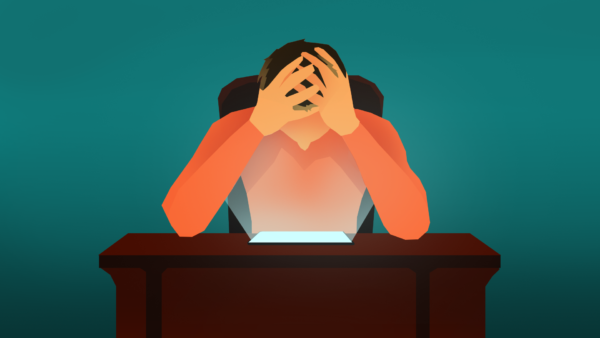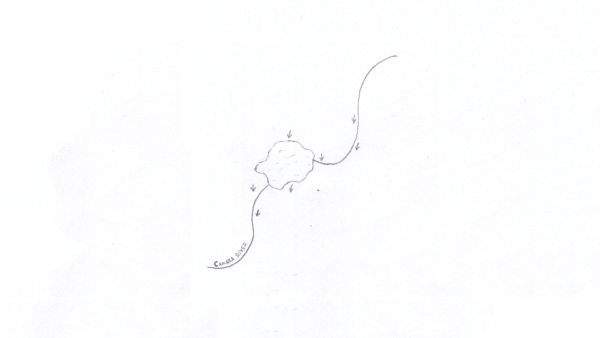Disclosure: This post may contain affiliate links, which means I may receive a small commission, at no cost to you, if you make a purchase through a link.
Filling sketchbooks is a great way to improve your art skills as well as a good metric to track your progress. However, it is fairly common that artists run out of inspiration and ideas for what to draw. That’s why I’ve compiled a list of 15+ ways to effortlessly fill your sketchbook!
A sketchbook can be a great place for you to practice art. A lot of artists carry their sketchbooks everywhere with them and use them every day to improve their drawings. The general advice going around the internet is “fill a sketchbook every month”, which, while good advice, can be fairly difficult to achieve if you’re lacking ideas.
A lot of the ideas on this list are fairly vague and you can interpret them in several ways. I do my best to explain them as well as I can, giving details where important, but don’t feel obligated to follow every detail I specify – the list is there for you, and if you take something a bit different than what I meant from it, good for you! Now without further ado, let’s dive into the ideas.
References
In general, you should have at least some references in whatever you’re drawing. However, there are several ways you can use a reference to create art. The main usage is to take the reference and draw it in your own style. By adapting the subject to your style, you learn about its form, while improving your skills in your unique style.
Besides that, you could also try to assume the style of another artist. You can browse Instagram or other social media, look at some drawings of other artists, and use their drawings as references. This way, you can learn a lot about their unique styles. Ask yourself questions such as what shading style they use, how thick are their outlines, what colors they usually use, and what shapes are predominant in their styles. This way, you can figure out what makes their styles work, and, if you choose to, you can use some of that knowledge to modify your own style. Here are a few artists with fairly unique styles that you can try this method with:

Studies
Before you choose to draw a complex subject, it’s a good idea to practice studying drawing the individual parts. As before, find good references, and draw the subjects from various different angles to make sure you truly understand the functions behind the subject, how light behaves around it, and what it looks like in three dimensions. While doing this, pay attention to the colors in the references, as understanding color theory will help your final piece look more cohesive.
For example, if your eventual goal is to draw a complex jungle environment, you should try sketching a few different native trees, as well as the animals that might show up, including their anatomy and facial expression to help you convey emotions in the final piece. This approach will make the final drawing more realistic and work better as one art piece while filling a few sketchbook pages in the process.
Drawing from life
Two-dimensional references can be incredibly useful while drawing. However, it is also important to get your brain to understand objects in three dimensions and to learn to translate what it sees in 3D to the 2D page. To practice this skill, draw something from life.
You can either pick an object that’s close by or go outside and draw people, objects, or landscapes from around your place of living and attempt to draw it, either realistically or in your own style. If you have a ZOO near where you are, consider spending a few hours there drawing the animals – that can be immensely helpful to your understanding of their anatomy, motion, and facial expressions.
While drawing from life, focus on your shading (draw the same object under different lighting to practice); as opposed to reference photos, in which cameras can slightly distort the light, drawing from life forces you to translate reality straight onto the page.
Designing an original character
Creating your own characters improves several skills at once. Not only do you practice drawing itself, you also have to think about character design, color theory, as well as the backstory and worldbuilding behind the characters.
Depending on what you like drawing, you can design human characters, fantasy creatures, sci-fi robots, or anything you can come up with. There is also a marketing benefit to designing OCs – they can be very popular on social media, as well as lead to bigger projects such as comics. Character design definitely deserves its own article at some point, so make sure to sign up for the newsletter below to get notified when that happens.
Once you’re done with the original design of your OC, draw them in various positions, different situations, various outfits, and interacting with their surroundings in different ways. For example, you could draw them going through their morning routine, draw them as a child, or learning to drive, etc.
If you’re looking for a few more of these ideas, you could try out some drawing prompts (I will be talking about them in more detail further in the article). Specifically for OCs, you can use the Art Prompts OC category, which contains over 250 similar prompts. They’re all accessible in the Community Discord server connected to my project, Art Prompts. You can find out more through this link!

Brainstorming ideas and themes
Brainstorming can be a great way to find new and interesting designs. If you have been sitting on a character, creature, or object idea for a while, but you haven’t really been able to get the design working, consider trying this method.
Try to boil down the idea to its total essentials, ideally two or three words describing it. Then, draw the first thing that comes to mind. This first iteration might be a bit cliché, so now try to draw it again, but completely different. Repeat this process several times, and each time try to push your mind to come up with a new design for the same idea. This forces you to think out of the box and come up with more original designs for your ideas.
You can also attempt this technique with random ideas from the internet – for example, searching for “drawing prompts” on Pinterest will give you plenty of these 1-3 word ideas to draw inspiration from.
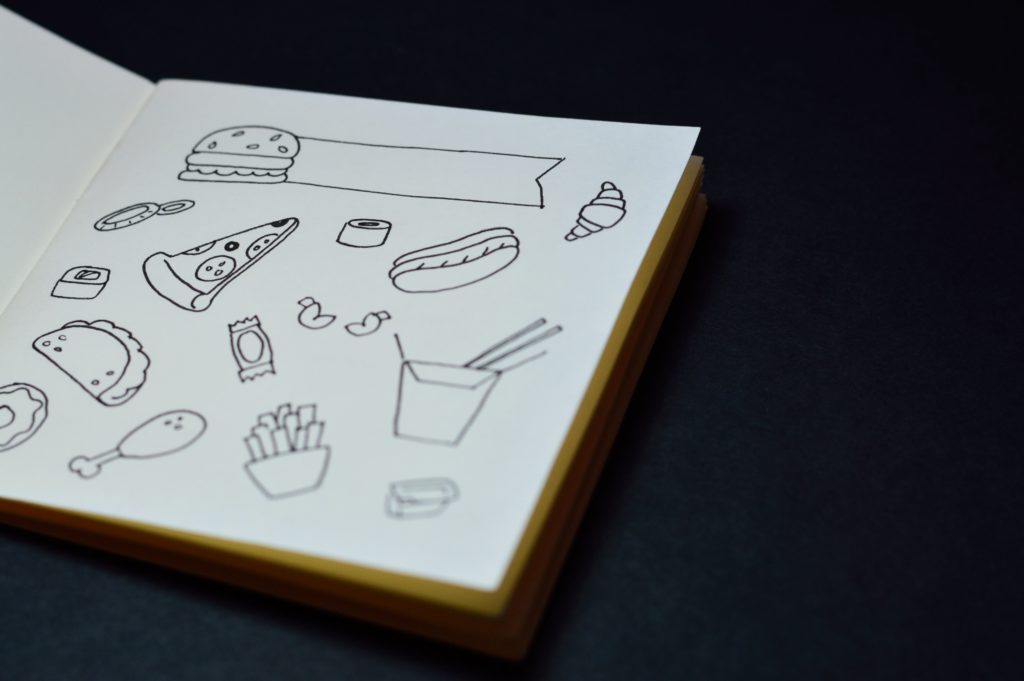
Art challenges
Art challenges can provide you with an excuse to practice your drawing under various constraints. Plus, they can give you something to do when you’re bored. Personally, I think challenges can be sorted into two categories, long-term and short-term.
Long-term challenges last multiple days (often a month), asking you to draw an art piece every day, and usually set a constraint on the subject of the drawings or the medium used to create the art. There are a lot of benefits to this long-term approach to challenges – by drawing something specific every day for a month, you massively improve your skills in that area. Besides that, a lot of these challenges are very popular online, so you can get quite a lot of social media recognition by participating in them. Examples of long-term challenges include Inktober, in which you draw with ink brushes, or Mermay, in which you draw mermaids. A lot of these challenges also have official and unofficial lists of prompts for every day, if you’re struggling to find ideas on what to draw for them.
Short-term challenges can take anywhere from a few minutes up to several hours. These challenges are largely intended to just be fun, so don’t expect your art skills to improve significantly in such a short time. However, you can still fill up a lot of your sketchbook and just enjoy your time with it. An example of such a challenge is the “10 minutes, 1 minute, 10 seconds” challenge, in which you choose a subject and draw it in increasingly small amounts of time.
I’ve already written a longer article on art challenges, serving as a list of both long-term and short-term challenges you can try out. Check the article out here!
Art Prompts
If you just want some ideas on what to draw, try looking for some drawing prompts. You can find a lot of them on Pinterest (those are usually just 1-3 word ideas). Alternatively, you can check out my other project, Art Prompts, which is a prompt generator containing over 1 500 prompts from categories such as Fantasy, People, or Horror. Here are some examples:
- Draw a monkey climbing a giraffe’s neck. (Animals)
- Draw a human anglerfish hybrid. (Horror)
- Draw the ruins of an alien temple. (Sci-fi)
- Draw the police raiding Stonewall Inn in 1969. (History)
- Draw a koi carp mermaid. (Fantasy)
Prompts such as these can give you new ideas on what to draw and challenge you to get out of your comfort zone. By practicing drawing new topics, you can significantly improve your skills as well as fill in a lot of sketchbook pages.
Repeat to practice a specific subject
Improving in art is a lot about practice. That’s what sketchbooks are for! Sometimes it’s a good idea to pick a specific subject you’re not confident in, find some references, and draw it again and again, from different angles, various lighting, different scenes, etc.
For example, if you can’t draw hands (let’s face it, who can?), set yourself a goal to draw a full page of hands every day. Make sure to not do so without references, but find reference photos of people of various ages and body types, to make sure you improve in drawing all types of hands. You should also include some drawings from life, so ask some of your friends if you can spend some time drawing your hands. Don’t get discouraged if you have a bad day and the drawings don’t look good – in the long term, you will definitely improve with this approach.
Learn new skills
There is always space to improve and learn wholly new skills. Try to step out of your comfort zone and invest your time into new subjects, new techniques, and new styles. There are plenty of ways to learn online, such as articles, videos, and courses. Here are some of my favorite art YouTubers, all of them having guide series which you can check out to learn something new:
For courses, I can wholeheartedly recommend Skillshare. You’ve probably heard about it from the many sponsorships on YouTube they did, but it’s a genuinely awesome platform for learning. You can get Premium access to all the courses for free for a month through one of the following links; here are some of my favorite art courses on Skillshare:
- You Can Draw Cute Animals! In 3 Simple Steps by Yasmina Creates
- Watercolor in the Woods: A Beginner’s Guide to Painting the Natural World by Rosalie Haizlett
- Mastering Illustration: Sketching, Inking & Color Essentials by Jazza
Draw abstract art
If you’re not used to drawing and painting abstract art, try it out! While it might not have a direct clear impact on your art skills in general, it can be a lot of fun and it can subtly improve your understanding of soft art skills, such as color theory and focal points.
For a more in-depth guide on abstract art, check out this great guide by Tara Leaver over on her website. While it does talk just about abstract paintings, I think these tips should apply to most types of abstract art.
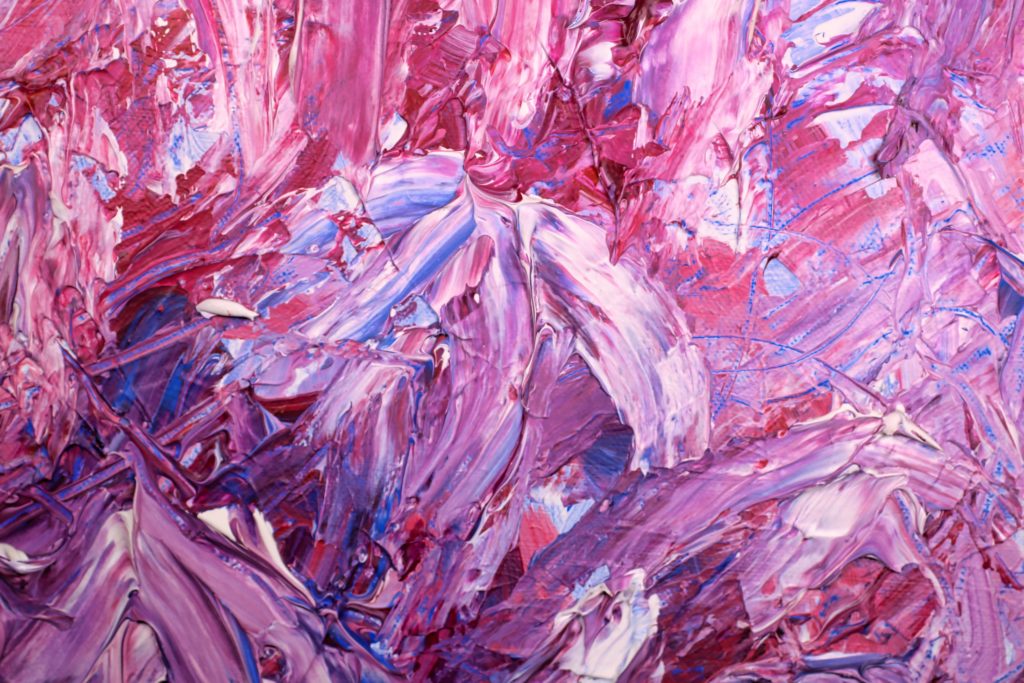
Redrawing your old art
This tip applies to you if you’ve been doing art for a longer time, ideally over several years. If you already have several older sketchbooks filled with your drawings, pull them out, find some of your bigger art pieces, and do your best to re-draw them.
After you’re done, compare the new version with the old one. Note the improvements you have made over the years, and try to find areas to improve at even further. Generally, the older the drawing you’re re-drawing the better, as you’ll be able to see the most of your improvement in the new art.
This method has a specific name online: “Draw This Again”. It’s a sort of art challenge and, just like the other ones, it’s quite popular on social media. So if you do attempt to showcase your improvements, make sure to post the comparisons online with the appropriate hashtags to get your art out there!
Frames from movies
This idea comes from the art YouTuber Kesh (you should check them out), specifically from their “10 ways to fill your sketchbook” video.
While watching movies or TV shows, screenshot scenes that look interesting. Save them somewhere in a folder on your computer, and when you’re looking for things to draw, browse through them and attempt to redraw the scenes in small frames in your sketchbook. Because these scenes are made by people who have studied cinematography for their whole lives, you can really learn a lot by studying their composition, color theory, angles, etc. Make sure to take screenshots from both animated and live-action movies, as both can provide a lot of insight into composition and related fields.
Pareidolia Effect drawing
The pareidolia effect is the tendency of people to recognize shapes and interpret subjects in places where there actually are none – for example, looking at clouds and seeing various animals. You can harness this effect in your art.
Basically speaking, you start with a random scribble in your sketchbook, without really thinking about it. As you go on, fill in more and more details with scribbles, letting your subconscious mind fill in the patterns that aren’t actually there.
This idea comes from the art YouTuber ArtistsJourney, and I would highly recommend checking out their short 4-minute video on the topic so you can see how such a pareidolia drawing happens.
Try out alternative media and materials
If you are a beginner artist, chances are you are mainly comfortable in just one material. You either use pencils, watercolors, ink, or pens, sometimes you even combine some of them together, but you’re still staying in your comfort zone a lot.
If your sketchbook can handle it (some types of paper aren’t suitable for a lot of materials), try to get out there and make art with new materials you aren’t used to. It’s going to take a lot of time to get comfortable with them, but, with effort, your art skills will improve, and you’ll be well-versed in more areas of art by the end of it.
You can even go a step further and try digital art (if you’re used to traditional), or vice versa. However, do note that if you want to try digital art, you are going to need a drawing tablet. My personal recommendation (for an artist on a budget) would be the Wacom Intuos.
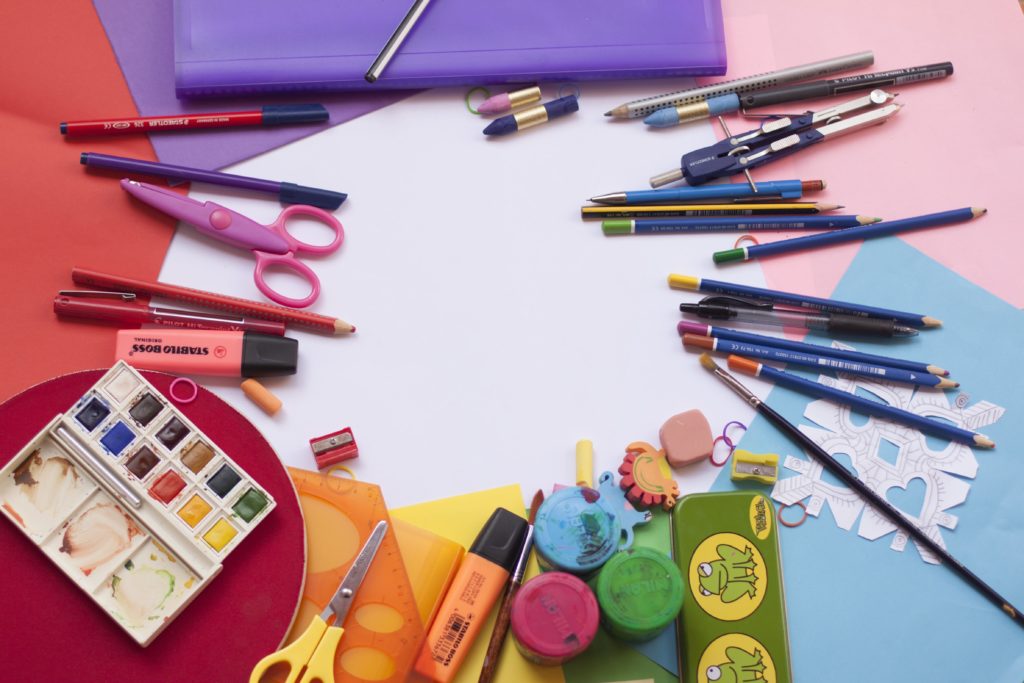
Use your sketchbook in worldbuilding
Since this is a predominantly worldbuilding-focused blog, I wanted to mention a few ways how you can use a sketchbook to work on your fictional worlds. During these exercises, you will not only improve your art skills and fill sketchbook pages but also develop details about your world.
One of the more obvious things to draw is characters from your world. However, besides important figures, consider drawing common people from various cultures in your world. This way, you can showcase what clothing they wear, what actions they do in their day-to-day lives, etc. Make sure to pay attention to the details – when it comes to clothing, consider the environment they live in as well as the materials they would have available to them.
You can also draw maps of various areas in your world. This can help you get a grasp of the layout of your world. I would recommend starting big, drawing your continents and their individual countries, and, as you progress in your sketchbook, zoom in into smaller and smaller parts of your world. You can draw maps of countries, cities, villages, or even individual houses. A map of a house can, via the details, speak a lot about a culture, so make sure to consider the people’s daily lives and the core values of their culture.
Finally, you can use your sketchbook to brainstorm and design new fauna and flora for your world. Original animals and plants can provide a lot of depth to your worldbuilding. Keep in mind the environments the life will thrive in. You can use the margins in your sketchbook to brainstorm notes. Try out multiple designs for each of your plants and animals, as the initial sketch will most probably not be the best you can do. If you’re looking for tips on the process of creating fauna and flora for your world itself, check out my articles on those topics:
Other resources to help you fill sketchbooks
Of course, I am not the only one to write an article or make a video that is supposed to help artists figure out how to fill a sketchbook. That is why I wanted to end this blog post with a short list of other resources you can check out if you’re interested in more about this topic. Make sure to give all these creators my love!
- 10 Ways to Fill Your Sketchbook by JelArts (video)
- 8 Ways To Fill Your Sketchbook by Mario Martín (article)
- 10 Easy Sketchbook Tips So You Can Make Art Now on ArtistsNetwork (article)
- How to Start (and Finish) a Sketchbook on SamBeAwesome (article)
- 5 Ways to Fill a Sketchbook: Fun Drawing Ideas and Sketchbook Hacks by Windy Iris Art (video)
Sketchbook checklist and other exclusive resources
Welcome to the end of the blog post! I know, it was a long one. But I do hope you enjoyed it as much as I enjoyed writing it. I do have a free bonus for you, as a reward for making this far. I have made a sketchbook checklist, as well as over ten more exclusive resources you can get when you sign up for my newsletter. Sign up below to get your exclusive bonuses!
Eledris Newsletter
Do you have another tip for filling a sketchbook? How long does it take you to fill one? Feel free to email me to tadeas@eledris.com, I’d love to chat!
How to Fill a Sketchbook FAQ
You can draw anything in your sketchbook, but here are some tips on what to draw:
draw using references, draw studies, design an original character, draw something from life, try an art challenge, find some art prompts, draw something in a different style, or draw a frame from a movie.
While there are many ways you can fill a sketchbook, one of the fastest ways is to pick a thing you want to get better at drawing (for example, hands), and draw that a lot.
I, personally, use only one side of my sketchbooks, because I think it looks much better. However, there’s nothing stopping you from filling in both pages, if you want to.
